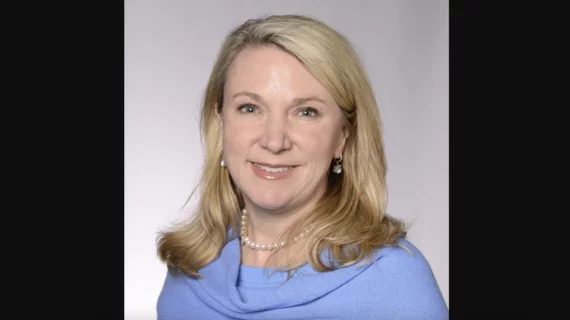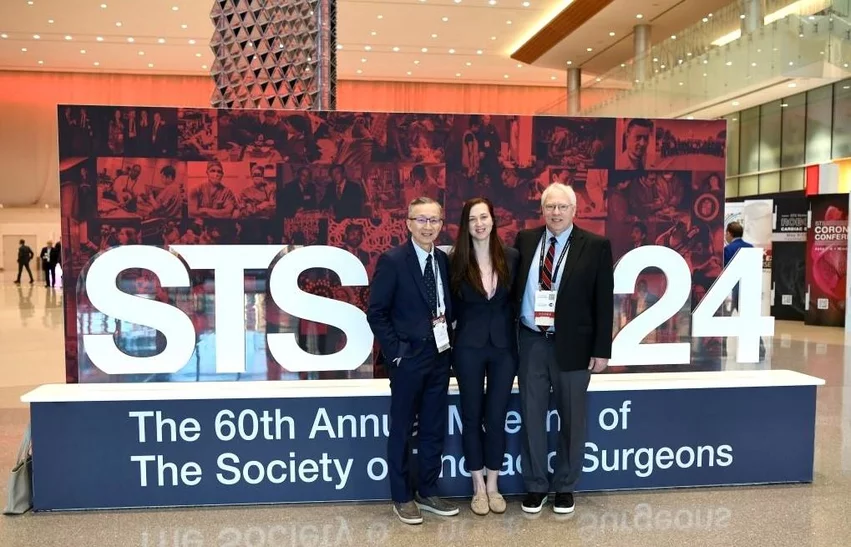Q&A: Society of Thoracic Surgeons president previews the trends and technologies of STS 2025
STS 2025, the 61st annual meeting of the Society of Thoracic Surgeons (STS), is set to take place Jan. 24-26 at the Los Angeles Convention Center.
It once looked like the unexpected wildfires in California could force STS to cancel the conference, but its members worked closely with city officials and decided to carry on as originally planned. The group even launched the STS Los Angeles Wildfire Relief Fund with an initial donation of $100,000.
STS President Jennifer C. Romano, MD, MS, a congenital heart surgeon with Mott Children’s Hospital and professor with the University of Michigan (UM) Medical School, spoke with Cardiovascular Business to preview STS 2025. She also explored some the biggest trends in cardiothoracic surgery and looked at how patient care may change in the years ahead.
Click below to read the full conversation:
Cardiovascular Business: How did STS decide to carry on with the conference as planned in the face of the devastating wildfires? I know it’s something you all took very seriously.
Jennifer C. Romano, MD, MS: The wildfires obviously took us all by surprise. The primary thing guiding our decision-making process was what was going on in Los Angeles. Would our presence impact their ability to fight the fires or help those who had to evacuate? We wanted to make sure we would not be impacting the resources that were needed for ongoing containment and recovery efforts.
The second thing we were focused on was the safety and well-being of our members who were coming to the meeting. We didn’t want people to be impacted if there were any concerns about air or water quality, for example, or access to lodging and/or transportation.
We also had ongoing communications with the Los Angeles Convention Bureau, which was incredibly helpful in terms of giving us a sense of perspective. We received the most beautiful letter from them about how meaningful it was for the city of Los Angeles that we were still coming in terms of supporting the community.
What can attendees expect to see at STS 2025? Which parts of the three-day conference are you especially excited about sharing with members?
We’ve added some really interesting things this year, including three pre-conference symposia: one focused on our advanced practice providers, one about aortic disease from birth to adulthood, and another about lung cancer in terms of how some recent studies may impact clinical practice.
Another thing we’ve added this year is more sessions about topics that are a bit more holistic. Carrie Cunningham, MD, who has spoken a great deal about physician well-being in the past, is coming to speak for a session, “Vulnerability Makes Us Whole,” that I am really excited about. We are seeing a dramatic increase in burnout in our specialty, and significantly higher rates of suicide and suicide ideation since the COVID-19 pandemic, so we wanted to open up those conversations and make them more mainstream.
Of course, people always enjoy our hands-on courses, and we have five of those that will be going on throughout the meeting as well. Those always draw a lot of attention, and we’re grateful for the industry support from our sponsors that make those possible.
We also have some amazing science coming out, including one presentation focused on comparing mechanical and bioprosthetic valves in patients who undergo surgical aortic valve replacement (SAVR). That is going to be a really impactful presentation—it should give us a much better sense what is giving our patients the best longevity.
That sounds fascinating. Aortic valve replacement (AVR) remains such a crucial topic for cardiologists and cardiac surgeons alike.
I think the challenging thing with AVR is when you talk about these younger patients with severe aortic stenosis who require care. We hope they can get decades of longevity and we want to make sure the decision we make sets them up for the future that has the greatest life expectancy. Some AVR treatments may be less invasive or easier for the patient, but they may not always be the best long-term solution. I think the research here is going to add a lot to that conversation, especially in terms of our younger patients.
From a policy/advocacy perspective, what is STS focused on in 2025 and beyond?
We are doing a lot of work around increasing access to lung cancer screening. Lung cancer is starting to impact an increasing number of individuals who would not have historically been considered at risk of lung cancer—nonsmokers and younger women, for example—and we are making sure there is access to adequate screening for them.
There has been a strong interest and investment in the concept of mobile lung cancer screening units that have CT scanners. This can help out communities where patients have to normally travel just to have access to screening. The options are really quite limited in some areas.
If we can diagnose patients with lung cancer earlier, their chance of survival is going to be dramatically increased. During our meeting, we also have talks planned about the best way to manage these patients. Some of the treatments available now for Stage 4 lung cancer are transformative compared to when I first trained.
How do see cardiothoracic surgery changing in the next five or 10 years?
I think technology will continue to hurdle forward in dramatic ways that impact our specialty. Look at how pharmacologic agents and immunotherapies are vastly changing the arenas of esophageal cancer and lung cancer, or how transcatheter-based approaches and implantable surgical valve options are changing the adult cardiac surgery space.
In terms of the congenital world, which is my world, I think changes in tissue engineering are really going to bring about some major changes for patients in the next five to 10 years. This patient population is growing, so you are really restricted by technologies that are only available in a fixed size. Having valves that can grow with patients is going to be really important.
I’m also excited about ventricular assist device developments and ongoing efforts in xenotransplantation. And artificial intelligence (AI), of course, is going to change every single thing we do. I think the impact of AI is going to be something that is hard for us to even begin to wrap our minds around.
You officially became STS’s president at the end of last year’s meeting, STS 2024. What have you learned during your time in the position?
There is so much to be learned sitting in this position. You have a very different vantage point of your colleagues and what they are experiencing. I think we tend to work within our silos—being a congenital heart surgeon, the bulk of what I focus on day to day is congenital heart disease. It’s been really enlightening for me to take a step back and look at the full landscape of cardiothoracic medicine and what cardiothoracic surgeons are experiencing.
I’ve also been able to make incredible relationships along the way. It’s an opportunity to get to know people in your field you would not have had the great fortune of interacting with otherwise.
Click here for more information about STS 2025.



